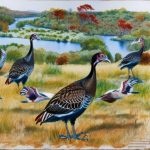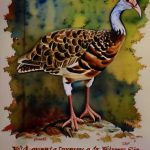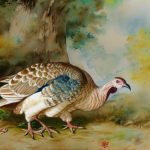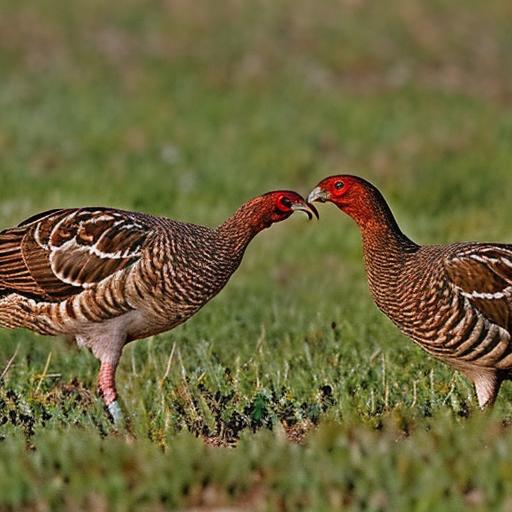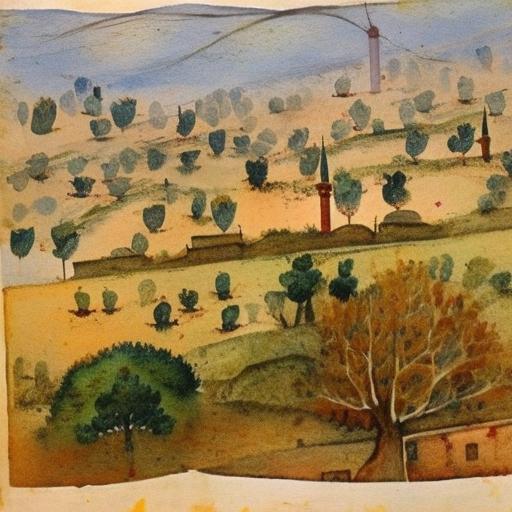Wild turkeys are large birds native to North America and are a popular game bird for hunters. They are known for their distinctive fan-shaped tails and wattled necks, as well as their impressive gobbling calls. These birds are highly adaptable and can be found in a variety of habitats, including forests, grasslands, and swamps. Wild turkeys are omnivorous and feed on a diet of seeds, fruits, insects, and small reptiles. They are also known for their impressive ability to fly, with some individuals capable of reaching speeds of up to 55 miles per hour.
Wild turkeys are social birds that live in flocks, with the males, known as toms, and the females, known as hens, forming separate groups outside of the breeding season. During the breeding season, however, the toms become more aggressive and territorial as they compete for the attention of the hens. The breeding season, also known as the mating season, is a crucial time for wild turkeys as it is when they engage in courtship behaviors, nesting, and egg-laying. Understanding the mating season of wild turkeys is important for conservation efforts and for those interested in observing these fascinating birds in their natural habitat.
Key Takeaways
- Wild turkeys are large birds native to North America and are known for their distinctive fan-shaped tails and wattled necks.
- The mating season of wild turkeys, also known as the breeding season, typically occurs in the spring and is characterized by elaborate courtship displays and vocalizations.
- Factors such as weather, food availability, and habitat quality can affect the breeding season of wild turkeys.
- Courtship behavior of wild turkeys includes strutting, gobbling, and displaying their feathers to attract mates.
- Nesting and egg-laying typically occur in secluded areas on the ground, and the female turkey will lay a clutch of eggs before beginning the incubation process.
The Mating Season of Wild Turkeys
The mating season of wild turkeys typically occurs in the spring, although the exact timing can vary depending on the region and local environmental conditions. During this time, the toms become more vocal and display aggressive behaviors as they compete for the attention of the hens. The toms will often puff out their feathers, fan their tails, and strut around in an elaborate display to attract the hens. This behavior is known as strutting and is a key part of the courtship process for wild turkeys.
The hens, on the other hand, will also engage in their own courtship behaviors by displaying receptive postures and vocalizations to signal their readiness to mate. Once a hen has chosen a mate, she will lead him away from the other toms to a secluded area where they will engage in mating. The mating season is a critical time for wild turkeys as it is when the next generation of birds is conceived. Understanding the behaviors and factors that affect the breeding season is important for ensuring the continued success of wild turkey populations.
Factors Affecting the Breeding Season
Several factors can influence the timing and success of the breeding season for wild turkeys. One of the most significant factors is the availability of food and suitable habitat. Wild turkeys require a diverse diet of seeds, fruits, and insects to maintain their health and reproductive success. A lack of food can lead to poor body condition and reduced fertility in both males and females. Additionally, suitable nesting sites are crucial for hens to successfully raise their young. Loss of habitat due to deforestation, urban development, and agricultural expansion can limit the availability of suitable nesting sites for wild turkeys.
Another important factor that can affect the breeding season is predation. Nest predation by mammals, birds of prey, and snakes can significantly impact the success of wild turkey nests. Hens must carefully select nesting sites and conceal their nests to minimize the risk of predation. Additionally, severe weather events such as droughts or heavy rainfall can also impact the breeding season by affecting food availability and nest survival. Understanding these factors and their impact on the breeding season is essential for developing effective conservation strategies for wild turkey populations.
Courtship Behavior of Wild Turkeys
The courtship behavior of wild turkeys is a fascinating display of elaborate postures, vocalizations, and interactions between males and females. During the mating season, toms will engage in strutting displays to attract the attention of hens. This involves puffing out their feathers, fanning their tails, and dragging their wings on the ground while emitting low-frequency gobbles. These displays are designed to impress the hens and demonstrate the fitness and dominance of the toms.
In response to the strutting displays of the toms, hens will exhibit receptive postures such as crouching low to the ground and emitting soft clucking sounds. This signals their readiness to mate and allows the toms to approach them for mating. The courtship behavior of wild turkeys is a highly ritualized process that has evolved over time to ensure successful reproduction. Understanding these behaviors is important for researchers and conservationists seeking to monitor and protect wild turkey populations.
Nesting and Egg-laying
After mating, hens will seek out suitable nesting sites to lay their eggs. They typically prefer areas with dense vegetation or underbrush that provides cover and protection from predators. Hens will construct shallow depressions on the ground lined with leaves, grass, and other materials to create a nest for their eggs. Once the nest is complete, hens will lay a clutch of eggs over a period of several days, with an average clutch size ranging from 8-12 eggs.
The incubation period for wild turkey eggs is approximately 28 days, during which time the hens will diligently tend to their nests and eggs. Hens will only leave their nests briefly each day to feed before returning to keep their eggs warm and protected. The nesting and egg-laying phase is a critical time for wild turkeys as it determines the success of the next generation. Conservation efforts aimed at protecting nesting habitats and minimizing disturbances during this time are essential for ensuring healthy wild turkey populations.
Incubation and Hatching
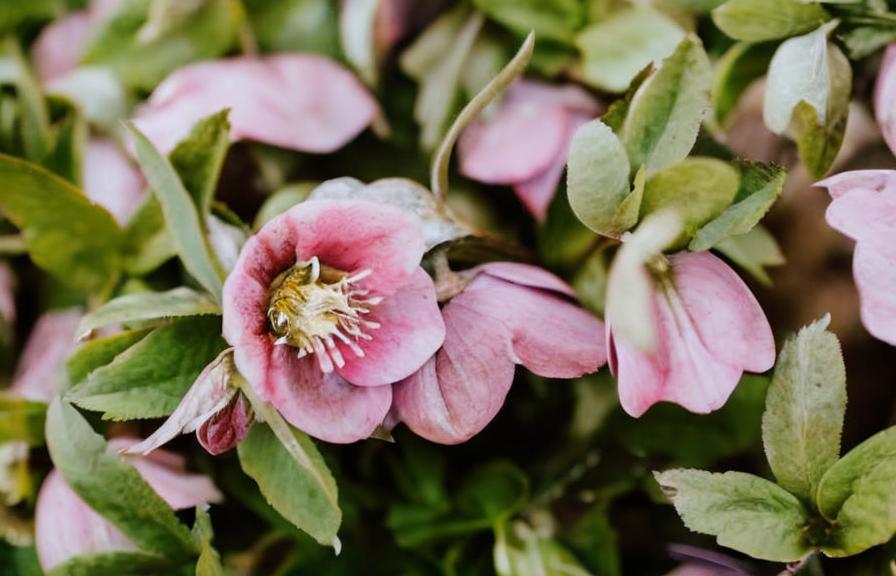
Once the eggs have been laid, the incubation period begins as the hens diligently keep their eggs warm until they are ready to hatch. During this time, hens will carefully regulate the temperature and humidity of their nests by adjusting their position and covering their eggs with their bodies. Incubation is a critical phase in the development of wild turkey embryos as it ensures proper growth and development before hatching.
After approximately 28 days, the eggs will begin to hatch, with the poults breaking free from their shells using an egg tooth located on their beaks. Once hatched, the poults are precocial, meaning they are able to walk, feed, and follow their mother shortly after birth. Hens will lead their broods away from the nest site in search of food and suitable habitat for rearing their young. The incubation and hatching phase is a vulnerable time for wild turkey poults as they are highly susceptible to predation and environmental stressors. Conservation efforts focused on protecting nesting sites and providing suitable habitat for rearing young are crucial for ensuring healthy wild turkey populations.
Conclusion and Conservation Efforts
In conclusion, understanding the mating season of wild turkeys is essential for conservation efforts aimed at protecting these iconic birds. The mating season is a critical time when wild turkeys engage in courtship behaviors, nesting, egg-laying, incubation, and hatching. Factors such as food availability, habitat loss, predation, and weather can significantly impact the success of the breeding season. Conservation efforts focused on protecting nesting habitats, minimizing disturbances during nesting and incubation, and providing suitable habitat for rearing young are essential for ensuring healthy wild turkey populations.
Conservationists can also work to restore and protect natural habitats that are crucial for wild turkey breeding success. This can include reforestation efforts, creating wildlife corridors, and implementing land management practices that benefit wild turkey populations. Additionally, educating the public about the importance of wild turkeys and their role in ecosystems can help garner support for conservation efforts. By working together to protect nesting habitats and minimize disturbances during the breeding season, we can ensure that future generations will have the opportunity to observe these magnificent birds in their natural habitat for years to come.
If you’re interested in learning about the breeding habits of wild turkeys, you might also want to explore the topic of guinea fowl egg laying. This article delves into the timing and process of when guinea fowl lay eggs, providing valuable insights for poultry enthusiasts. Understanding the breeding patterns of different bird species can offer a fascinating glimpse into the natural world and help inform your own poultry care practices.
FAQs
What is the breeding season for wild turkeys?
The breeding season for wild turkeys typically begins in the spring, usually around March or April, and can last through May or June.
At what age do wild turkeys start breeding?
Male wild turkeys, known as toms, typically start breeding when they are around 2 years old. Female wild turkeys, known as hens, usually start breeding when they are around 1 year old.
What behaviors do wild turkeys exhibit during the breeding season?
During the breeding season, male wild turkeys display their feathers and perform elaborate courtship displays to attract females. This can include puffing up their feathers, fanning out their tails, and making vocalizations.
How do wild turkeys choose a mate?
Female wild turkeys choose their mates based on the displays and behaviors of the males. They are attracted to males that display strong and healthy characteristics.
What factors can affect the breeding success of wild turkeys?
Factors such as habitat quality, food availability, and predation can all affect the breeding success of wild turkeys. Additionally, severe weather events or disease outbreaks can also impact breeding success.
Meet Walter, the feathered-friend fanatic of Florida! Nestled in the sunshine state, Walter struts through life with his feathered companions, clucking his way to happiness. With a coop that’s fancier than a five-star hotel, he’s the Don Juan of the chicken world. When he’s not teaching his hens to do the cha-cha, you’ll find him in a heated debate with his prized rooster, Sir Clucks-a-Lot. Walter’s poultry passion is no yolk; he’s the sunny-side-up guy you never knew you needed in your flock of friends!


